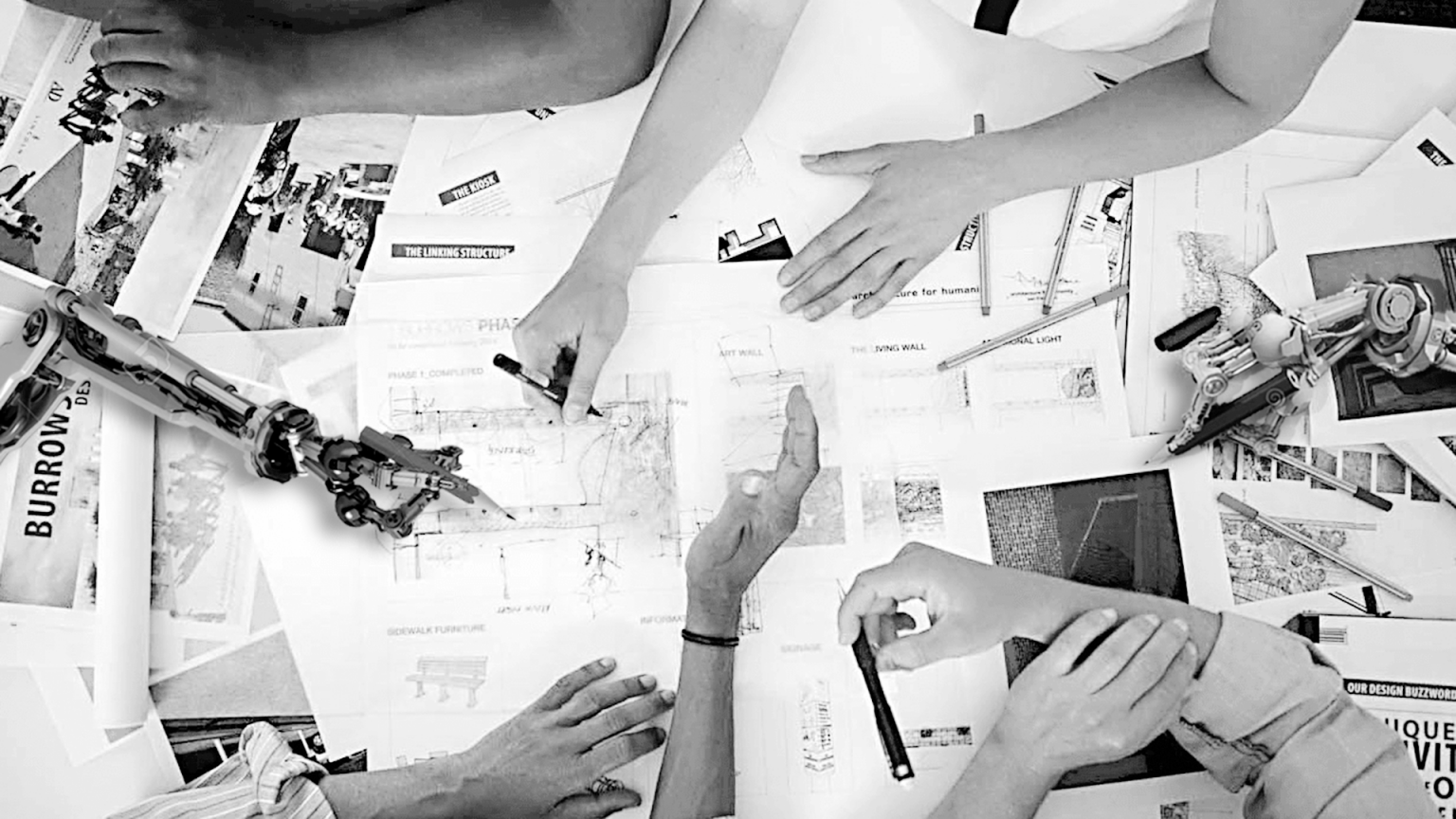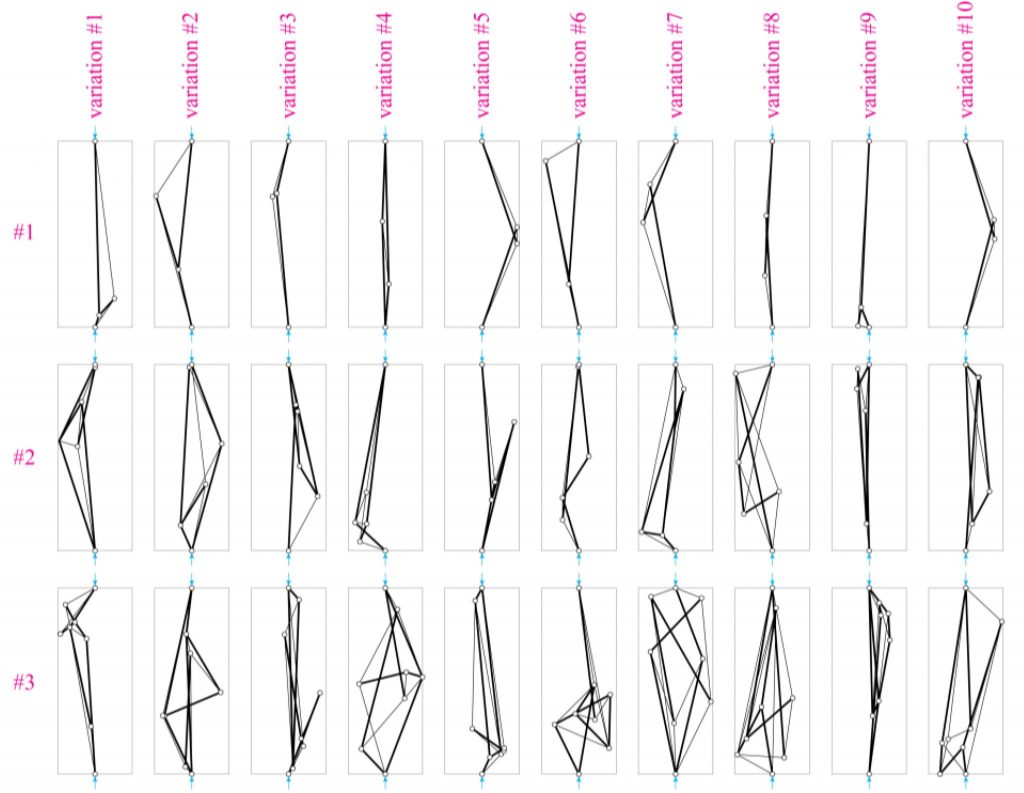generative grammars
Design is an ill-structured and costly problem whose complexity can significantly increase during the process due to emerging requirements. How can the computer help the designer during the early-stage design of structures? How should they communicate together? How can the machine provide instant feedback on performance requirements, allow for fast generative exploration of alternative solutions and be capable of unveiling unexpected structural typologies?

Please note that the publication lists from Infoscience integrated into the EPFL website, lab or people pages are frozen following the launch of the new version of platform. The owners of these pages are invited to recreate their publication list from Infoscience. For any assistance, please consult the Infoscience help or contact support.
Design space exploration through force-based grammar rule
Design exploration frames the process of understanding design as a challenge and helps taming its complexity. It is a creative, but also paramount, process, that flourishes diversity, emergence and variability. The approaches used during this exploration stage can widen, or narrow, the domain where design variants can be found. Computational tools have shown their great potential to explore design in a fast way. However, the digitalization of the process is not sufficient to ensure the generation of radically new designs and subsequently not guaranteed to explore the full range of the design space. The design of architectural forms, that are structurally relevant, shares the same challenges and risks. Additionally, it introduces equilibrium constraints.This paper presents a design framework, which fuses force-driven grammar rules for the generation of unprecedent spatial structural systems that go beyond any existing catalogues of mathematically known structural typologies. Operating on a rule-based level rather than on a variable-based level, allows the incremental transformation of the model and the backtracking to previous steps, while static equilibrium is always retained. The acquired transformations are possible to be slightly or highly constrained along with the designer’s intended exploration preferences.
archiDOCT. 2020-07-01. Vol. 8, num. 1, p. 50-64.
Please note that the publication lists from Infoscience integrated into the EPFL website, lab or people pages are frozen following the launch of the new version of platform. The owners of these pages are invited to recreate their publication list from Infoscience. For any assistance, please consult the Infoscience help or contact support.
Grammar-based generation of trusses within non-convex domains
A force-driven generative grammar rule is proposed as a design exploration method for planar networks in static equilibrium within non-convex domains. The aim is to enrich the catalog of unconventional structural typologies. Empty or partial networks in equilibrium are used as the starting point of the process. The rule’s successive application always leads to complete networks but ensures static equilibrium throughout the process. Overall, it operates as a form-finding engine for planar trusses and helps designers to gain knowledge and develop intuition about structural design. A number of case studies highlight the factors that affect: the number of iterations, the exploratory power, as well as the additional parameters that are required to apply a rule. Extension of the method to more general applications is eventually suggested.
2019-09-27. International fib Symposium on Conceptual Design of Structures, Madrid, Spain, September 26-27, 2019. p. 193-200.
Please note that the publication lists from Infoscience integrated into the EPFL website, lab or people pages are frozen following the launch of the new version of platform. The owners of these pages are invited to recreate their publication list from Infoscience. For any assistance, please consult the Infoscience help or contact support.
Automatic generation of diverse equilibrium structures through shape grammars and graphic statics
This article presents a computational design methodology that integrates generative (architectural) and analytical (engineering) procedures into a simultaneous design process. By combining shape grammars and graphic statics, the proposed methodology enables the following: (1) rapid generation of diverse, yet statically equilibrated discrete structures; (2) exploration of various design alternatives without any biases toward pre-existing typologies; (3) customization of the framework for unique formulations of design problems and a wide range of applications; and (4) intuitive, bidirectional interaction between the form and forces of the structure through reciprocal diagrams. Design tests presented in this article illustrate the creative potential of the proposed approach and demonstrate the possibility for unbiased explorations of richer and broader design spaces during early stages of design, with much more trial and less error.
International Journal of Space Structures. 2016. Vol. 31, num. 2-4, p. 146-163. DOI : 10.1177/0266351116660798.
other publications:
- Modelling with forces: grammar-based graphic statics for diverse architectural structures
Design Modelling Symposium 2015 (detailed record) - Grammar-based generation of equilibrium structures through graphic statics
IASS Symposium 2015 (detailed record)